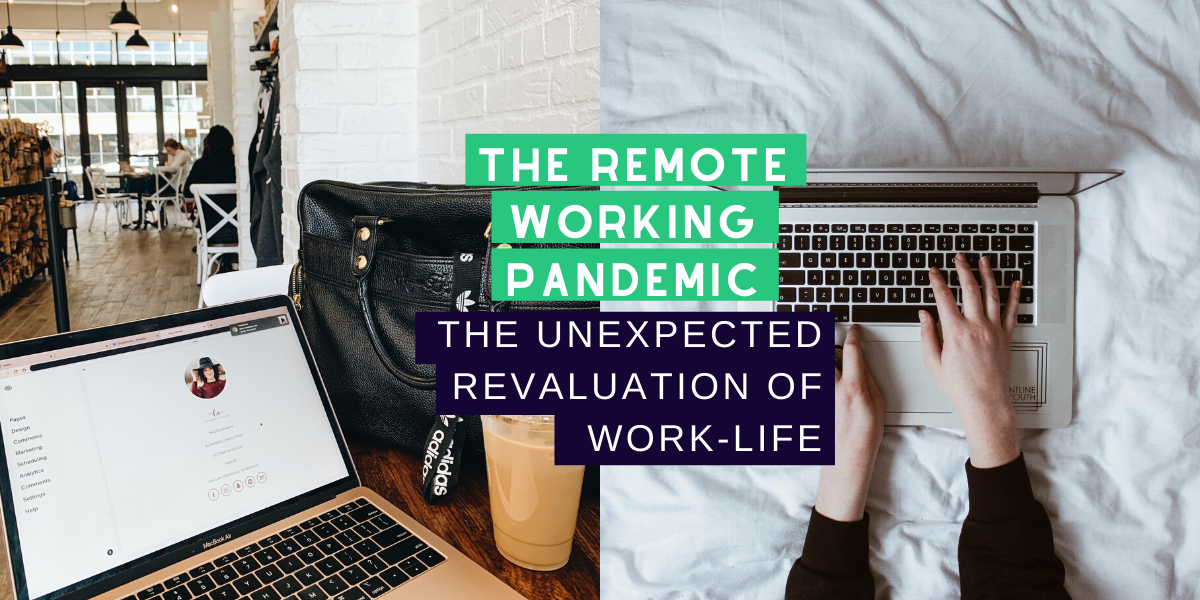Almost exactly a year ago, I wrote a piece on the death of the face-to-face meeting. Ironically, and totally unexpectedly, I’m now sitting at home in my make-shift office having not had a meeting in the same room as anyone else for over four months.
While some people are busy showing-off about how they’ve seized the day and used the last few months as an ‘opportunity’ – learning a new language, tackling a big challenge or developing a new skill – the majority of us are patting ourselves on the back for just keeping our heads above water – and rightly so!
Like many, I’ve realised that my three biggest hobbies in life are being in the pub, eating out and travelling. But I’m healthy, not living alone, have no kids to homeschool and I’ve got a garden. So if you run through the common checklist of worries, then by all accounts I have absolutely zero to complain about. The front door has become a focus of concern though. When did I last go out? When will my bloody Amazon delivery arrive? Closing the front door doesn’t trigger quite the same feeling of relief as it used to. Oh to get home, slam it and say, “well, that was a crap day” – we can dream!
But while I find myself longing for the mundane, industry trailblazers are throwing the rules out of the window. Twitter announced ‘working from home forever’ as an option for its team and Amazon suggested its staff won’t be back in the office before October at least. So, as we settle into the idea that things may not go ‘back to normal’ ever again, many of us are starting to see some gains from enforced home-working and have started to consider which parts of our old working lives we really value – and which we can actually do without!
How has WFH made us reconsider aspects of our working lives?
- Realising we’re all human
Enforced home working has confirmed what a lot of us already knew: that we can perform just as well remotely as we can when working in an office environment. Admittedly, I miss sitting in the same room as my colleagues and clients, almost as much as I miss being down the pub. But I’ve also had more open, honest and authentic conversations with clients and colleagues in the past two months than I’ve ever had in face-to-face meetings (while sober anyway).
Fran, a colleague in London, agreed:
What I’ve appreciated most about remote meetings is how they give you a glimpse into people’s lives outside of work. Not just because I love seeing people in their natural habitat, but because when someone’s child crashes a call, a dog’s barking in the background, or you see that someone’s drinking tea from a novelty mug, it reminds you that they’re human too. I’ve become a lot closer to both clients and colleagues as a result.
- Breaking down hierarchies and democratising creativity
Now that we’ve moved on from spending the first five minutes of every call talking about how strange this all is, many of us are falling into more positive habits. Hierarchies are a lot less apparent in video meetings – execs swanning in late, interrupting the meeting, recapping unnecessarily and then taking things in a different direction is something we have all experienced in face-to-face meetings. Thankfully, this is nigh-on impossible to do over the phone.
Diana, from our Berlin team, commented:
On video calls hierarchies are not nearly as visible. No suits, no power plays in meetings (who sits down first etc) and it’s harder for one person (often the most senior) to dominate the conversation.
Showing up to a meeting late or leaving early is no longer a show of power, but more a lack of manners. This is something we’ve all known for years, but have never had the confidence or ability to change. But enforced remote working has done that for us – finally!
Personally, I’ve loved seeing some of my most talented but often-underestimated colleagues gain ground in this new environment. Too often the face-to-face meeting is taken over by the extroverts, or by the people in the room who know each other best. My hope is that the working relationships forged during this time won’t disappear as quickly as they were built.
- Face-to-face meetings build the best relationships
Fran continued:
Not meeting face-to-face does have its downsides though. It’s easy to feel alone on a video call, especially if something’s going wrong or you’ve been put on the spot with a question you can’t answer. I’ve also noticed that no one makes eye contact in video meetings, primarily because it looks like they’re creepily staring down the camera lens. This isn’t great for building relationships or rapport, and I wonder whether we’ll struggle to look at each other directly when we go back to having in-person meetings.
This is something I had noticed too. Although there are definitely positives of virtual meetings, it has become clear (if it wasn’t already) that the best relationships are built when you get to sit in the same room as someone and physically spend time with them. There’s still no beating that.
Making the effort
A recent survey the lorries held internally (aptly named, Quarantine Confessions) showed that nearly 50% of the global team had taken all video calls while wearing pyjama bottoms and a third have spent 4+ days in their PJs!
For me, there is a psychological connection between ‘getting ready for work’ and my ability to concentrate and focus. Having said that, my getting-ready-for-work routine now consists of a) showering and b) putting on clean clothes. My hair hasn’t seen a blow-dryer for weeks! At first it felt odd – I even removed my corporate headshot on Zoom so as not to give people a shock between the ‘polished’ me, and the real one. But now, ‘making an effort’ consists of putting on a watch or some earrings – the smaller things I never considered before have started to make a difference to how I feel when I’m working.
Of course, it’s far easier to sit on a video call without a scrap of make up on in leggings and a jumper, than it will be to sit in a client meeting with my bare face on show! But I’d like to think that this has made us readdress whether how much “effort” we make with our appearance impacts how we perform at work. Particularly for women, who have been told for years that presentation directly impacts people’s perception of your ability.
Friends and colleagues have agreed that this new reality has affected how they feel about ‘dressing for work’.
Daisy, marketer at a law firm, and long-time friend:
A long time ago I read that women who wear dresses to work do better in their career and, as a result, I wore dresses a lot in my early career. But as I get older, I care less about what I look like and more about what I’m actually talking about. Remote working has enhanced that.
I have very curly hair and wearing my hair naturally was always a benchmark for me whether I looked ‘smart’ or not. But it seems to matter less on a zoom call. Lockdown has given us an appreciation for what actually matters – I’m planning to try and stick to this when I go back into the office – even just to save me extra time in the mornings!!
Rebecca, RLYL London team:
I’ve realised that the value I found in putting my make up on in the morning half asleep wasn’t just for appearance reasons, but to take time to myself for 20 minutes or so before I need to face the day.
We’ve all taken comfort in knowing we’re not alone when it comes to being a bit lazy about styling our hair or wearing anything that isn’t elasticated. And talking about it strips away the work persona and reminds us that we’re all human. Being more relatable for not looking ‘your best’ is nothing new; take one look at the new wave of social influencers who are ditching the perfectly polished appearance as a way to better resonate with their audience. It’s interesting to see how this now applies to our working relationships and if this will continue once we’re back in the office.
I’m looking forward to revisiting my getting ready ritual for a sense of normality. And from speaking to friends, they feel the same. Although, I think I’ve forgotten how to apply mascara…!
I think we can all safely say that we don’t know how we’ll feel when we’re expected to start making our way slowly back to the office – even if it is going to be less than ever before. But this whole experience has got us thinking and talking – after years of keeping our heads down and not making eye contact on the tube. So, despite possibly feeling like we’re wading through treacle, on reflection we are making some progress. Even if that isn’t by learning Spanish or to play the guitar!
What’s next?
As Fran puts it:
The idea of ‘going back to normal’ suggests that what we were doing before was the right way of doing things. I think this experiment that no-one asked for has proven that perhaps we do need to rethink how we work.
For me, face-to-face meetings always reap rewards far higher than slack, emails or zoom calls. Working remotely is great for task-based activity, but I don’t think you can beat having an office with a full team in it. Yes, we’ve all proved we don’t need to be in each other’s company every minute of our work day to make good stuff happen, but that doesn’t mean we don’t want to be in each other’s company at all.
Critically look at what’s worked for you during this time – and what hasn’t. Yes, there are workplace practices which exist because they’re effective. But what this pandemic has taught people and businesses alike is that some exist purely because they always have; they were effective once upon a time, but aren’t so much now. So, be open to doing things differently.
Quite honestly, I have no idea where we’ll be in a year from now. I might be writing round-three of this blog (much to your delight, I’m sure) about how I haven’t shaken hands for over a year. But honestly, I hope I’m down the pub with my colleagues instead.
Stay up-to-date with the lorries on Twitter where we’re sharing our WFH experiences under the #LorriesWFH hashtag.




